World’s steepest funicular puts Stoos back on the tourist map
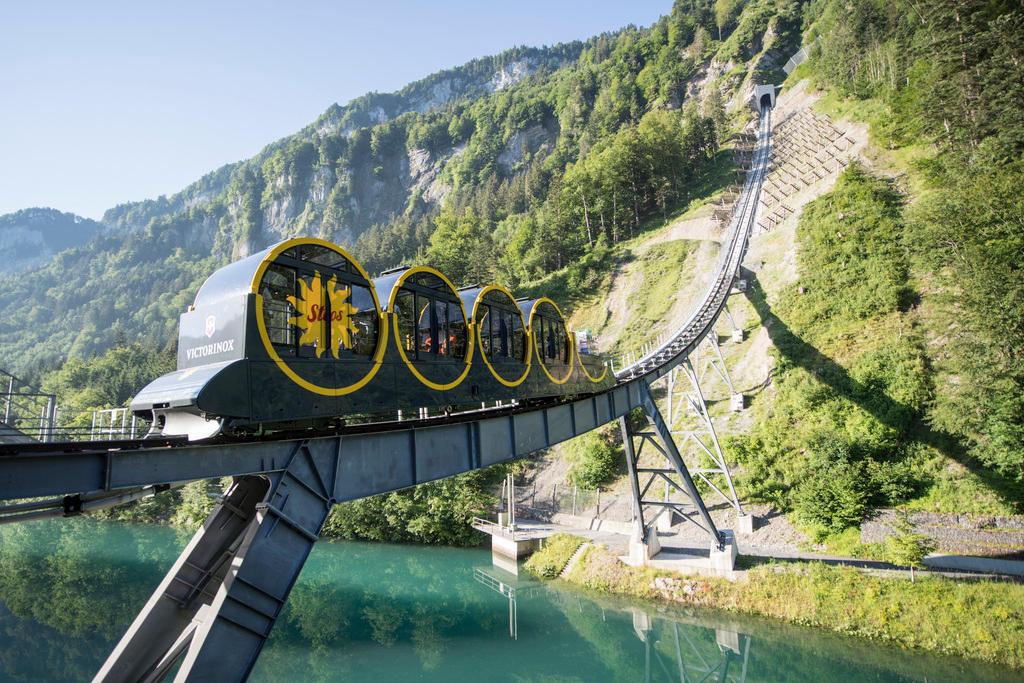
Straight up to the top of the mountain: the Stoos funicular railway gives you the steepest ascent of its kind in the world. For the little Alpine village in central Switzerland, it has meant a comeback as an international tourist destination.
The elderly Japanese couple seem lost. He keeps looking at the timetables posted for public transport. Train, bus or boat? She looks around, bewildered, as if seeking inspiration. With their boots and trekking poles the pair are equipped for Alpine hiking. But here in the little railway station of Brunnen in Canton Schwyz on the banks of Lake Lucerne, they seem completely disoriented.
I try to help them: “Stoos?”. No reaction. “Railway?”. Nothing. Then I stretch out my fingers and curve my hand, to indicate a steep incline: “World record?”. “Yes, yes!”, they chorus. Lack of any real common language ends further discussion. One thing is clear, however: the tourists want to try the steepest funicular railway in the world.
Featured world-wide
Opened in December 2017, the Stoos funicular railway connects the village of that name to the Muota valley, famous for the Hölloch caves, which are among the longest in the world. The new funicular has taken the place of an older line built in 1933, the concession for which had expired.
With the new connection – which cost over CHF 52 million ($52.9 million) – a three-minute ride gets you up the 1,740 metre route, with an altitude difference of 744 metres. At its steepest point, the slope is 110%, about 47 degrees. This unique feature got Stoos featured in the world’s media, from the US to China.
“We were expecting a certain amount of interest at the international level, but not this much. This cable railway is now known in just about every country in the world!” says Ivan Steiner, regional tourism manager. On social media, footage of the unusually-shaped cablecar making its way up the mountainside through avalanche barriers has been watched millions of times.
Queen Victoria’s favourite
Situated at an altitude of 1,330 metres, Stoos has about 150 inhabitants. The village is closed to traffic, and the only ways to get there, apart from a narrow private road, are an aerial lift and the new funicular railway. “We are very much dependent on tourism, especially in the winter season,” says Daniel Betschart, mayor of the commune of Morschach-Stoos.
The region was already well-known in the Victorian age, and by the turn of the century the health resort at Stoos was much appreciated by the well-to-do. Thanks to its treatments based on whey, it attracted an international clientele – French, Russian, and English – as can be read at the website of the hotel that has taken the place of the original resort.
“Queen Victoria often spent holidays up here. She stayed up here for weeks, accompanied only by servants. There were grand hotels here, and not just one but two 18-hole golf courses,” recalls Betschart.
A place to visit in 2018
After the First World War, tourism went into decline. Most of those who now came to this part of central Switzerland were Swiss, from Schwyz or neighbouring cantons. “With the new funicular railway we are now seeing a more international kind of tourism”, says Betschart.
This is confirmed by a look around the pedestrian streets of Stoos. On a sunny summer’s day, outdoor cafés are full, though it’s well after lunchtime. Most of the voices are Swiss-German, but you also notice families from the Persian Gulf, Asia or Eastern Europe.
Last winter, the number of visitors was about 30% higher than the previous year, notes Steiner. Between May 1 and July 24 this year there were 109,000 visitors recorded, double what it was in the same period in 2017. “This development is certainly linked to the new cable railway, which can transport up to 1,500 people in an hour, 500 more than the old system. But it’s hard to quantify the effect exactly, since the good weather may be a factor too,” he says.
For sure, it makes a difference, he says, that Stoos can count on unsolicited media exposure. “In its list of 52 places to visit in 2018, the New York Times put Stoos and the Lake Lucerne region in fifth position. That’s really a coup for us!”.
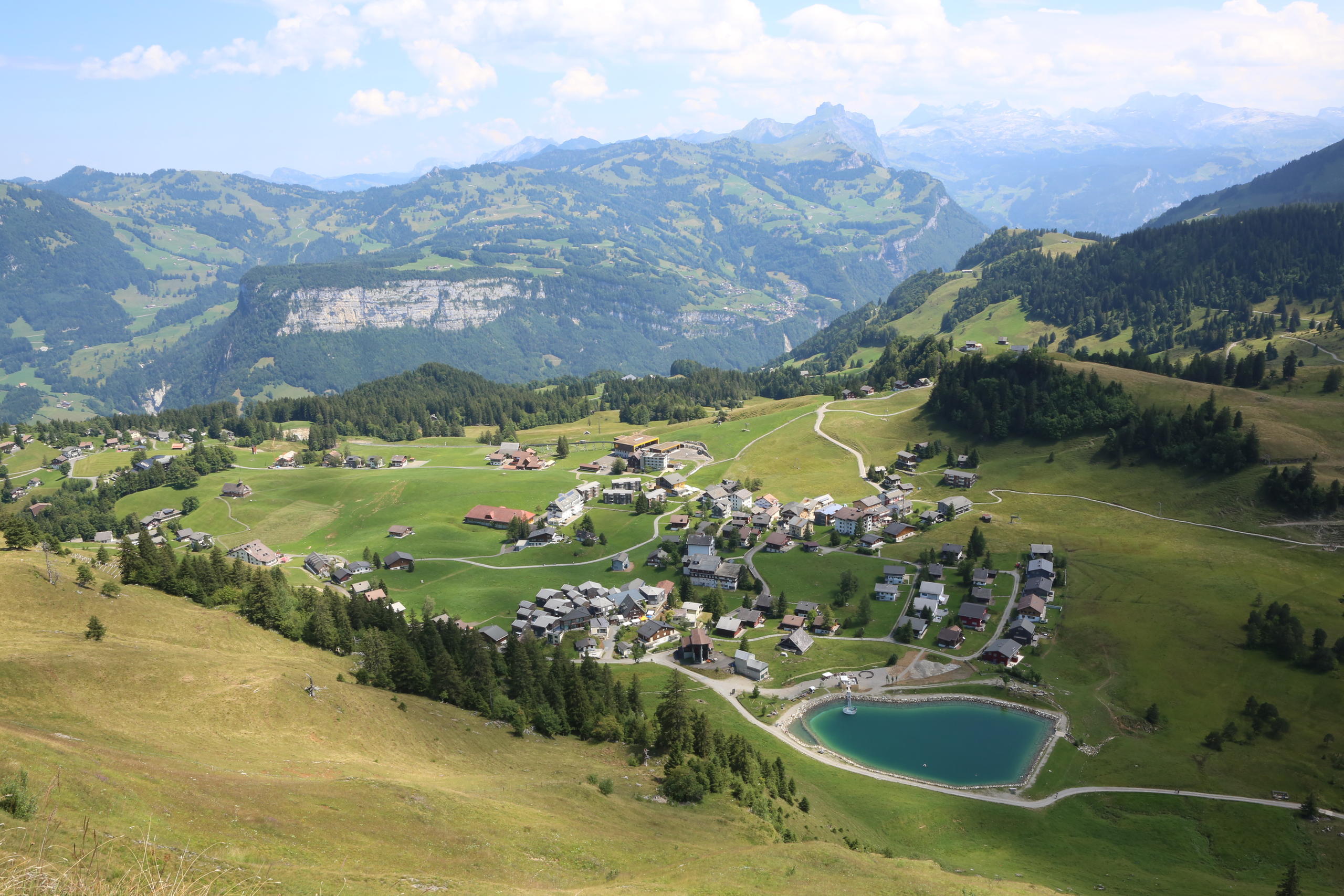
No steps to climb
The new funicular railway in Stoos has achieved worldwide fame thanks to its futuristic design and innovative technology as well as its spectacular setting. The system of automatic balancing developed by the Swiss manufacturer Garaventa keeps the cabin floors level no matter what the incline. At the valley stations and in Stoos there are no flights of steps, which would be a problem for travellers with luggage, walkers or wheelchairs, explains Steiner.
“This was one of our particular wishes to facilitate transport of passengers and even goods too. There are other systems that can compensate for the gradient, but this is the only one that lets you have very compact cabins, something really essential since the railway has to go through three tunnels,” he says.
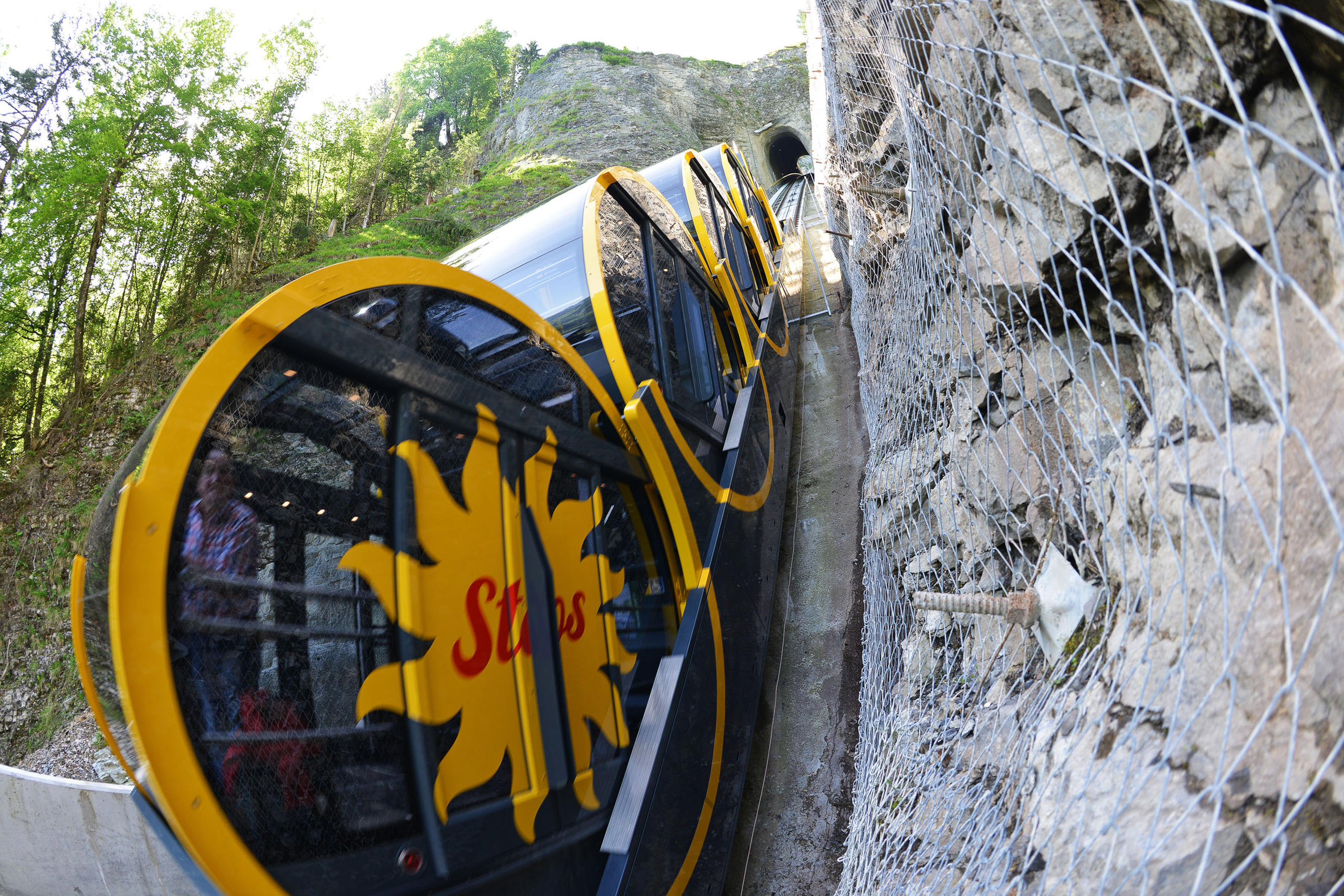
Another feature is the location of the top station. Unlike the old one, it is in the very centre of the village, and just beside the ski lifts. This is an advantage for the tourists – who can put on their skis as soon as they get off – and even for the residents. For, as mayor Betschart emphasises, the funicular railway is first and foremost a means of public transport for anyone wanting to go down into the valley, and a means of transporting up all the goods needed in the village, from building materials to foodstuffs.
“It’s really like a bus or a train. With the new cable railway we can guarantee public transport for the village. It’s an essential link,” emphasises Steiner.
In Stoos, the two men tell me, all are pleased with the new link. However, it took 14 years and 11 popular votes to finalise the project.
“Here alone we voted five times!”
“In some countries people don’t get to have their say about big projects. Here, though, the people were consulted eleven times,” Betschart points out. Mostly the votes were about “procedural matters”, though, he says, seeing as the new funicular railway route, which goes through the territories of three communes, required changes to the various zoning plans.
In the commune of Morschach-Stoos alone, the citizens went to the polls five times, says the mayor. “The project always had broad-based support. The people also agreed to give it financing of CHF5 million, which was a huge sum for a small commune of 1,110 inhabitants like us.”
This major investment is, according to Steiner, a kind of “life-insurance policy” for the little Alpine village. “The new funicular railway has ensured a future for tourism in Stoos and the whole surrounding region.”
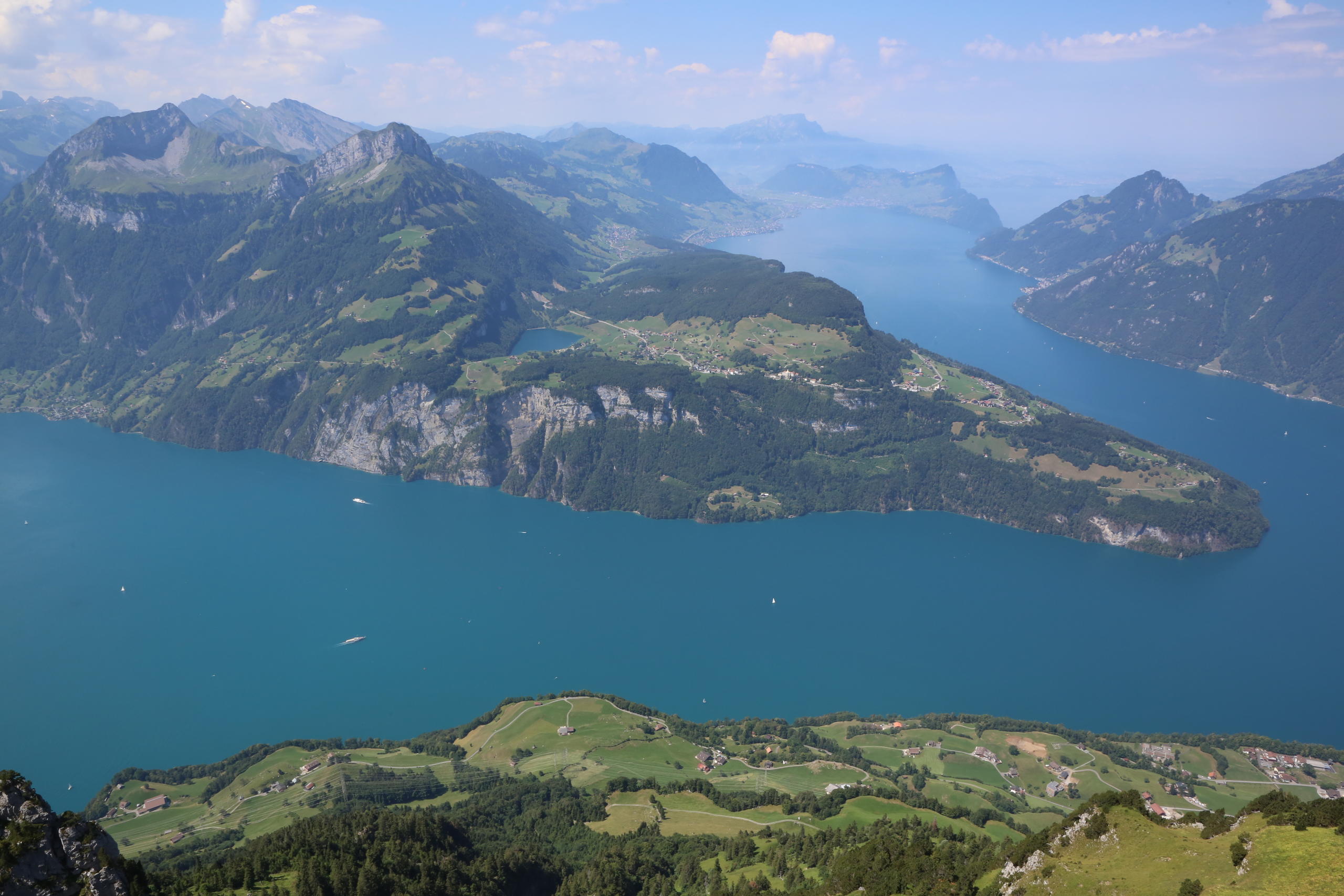
– Maximum slope: 110% (47 degrees)
– Passengers: 1,500 per hour
– Time taken for journey: 3 to 5 minutes
– Length of journey: 1,740 metres
– Altitude difference: 744 metres
– Overall construction costs: more than CHF52 million
– Fare: CHF22 for a return ticket (without reductions)

In compliance with the JTI standards
More: SWI swissinfo.ch certified by the Journalism Trust Initiative

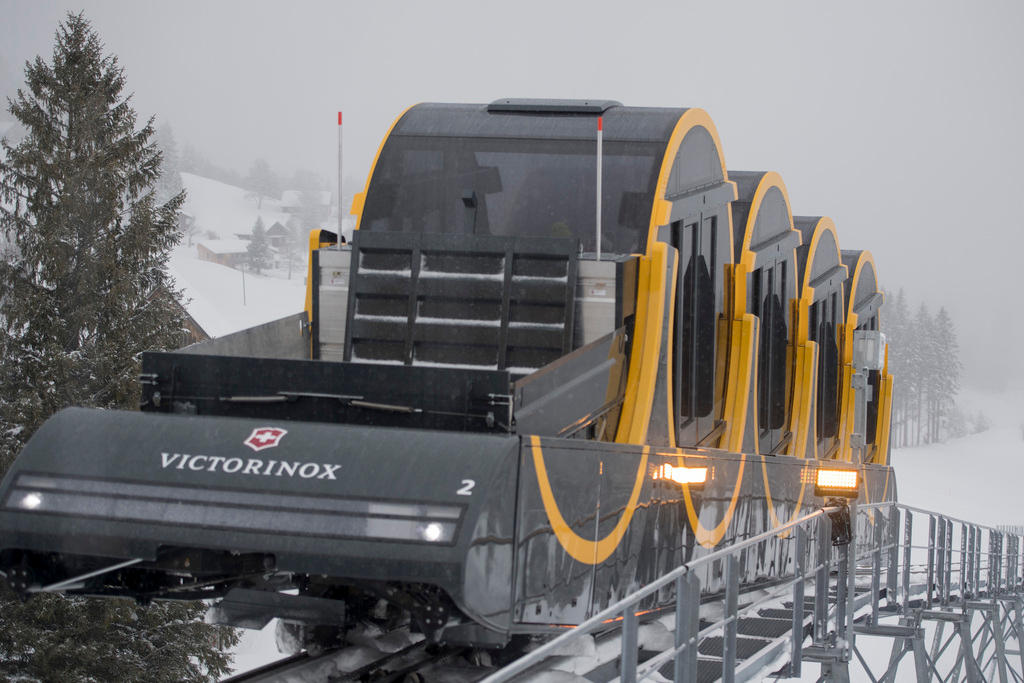
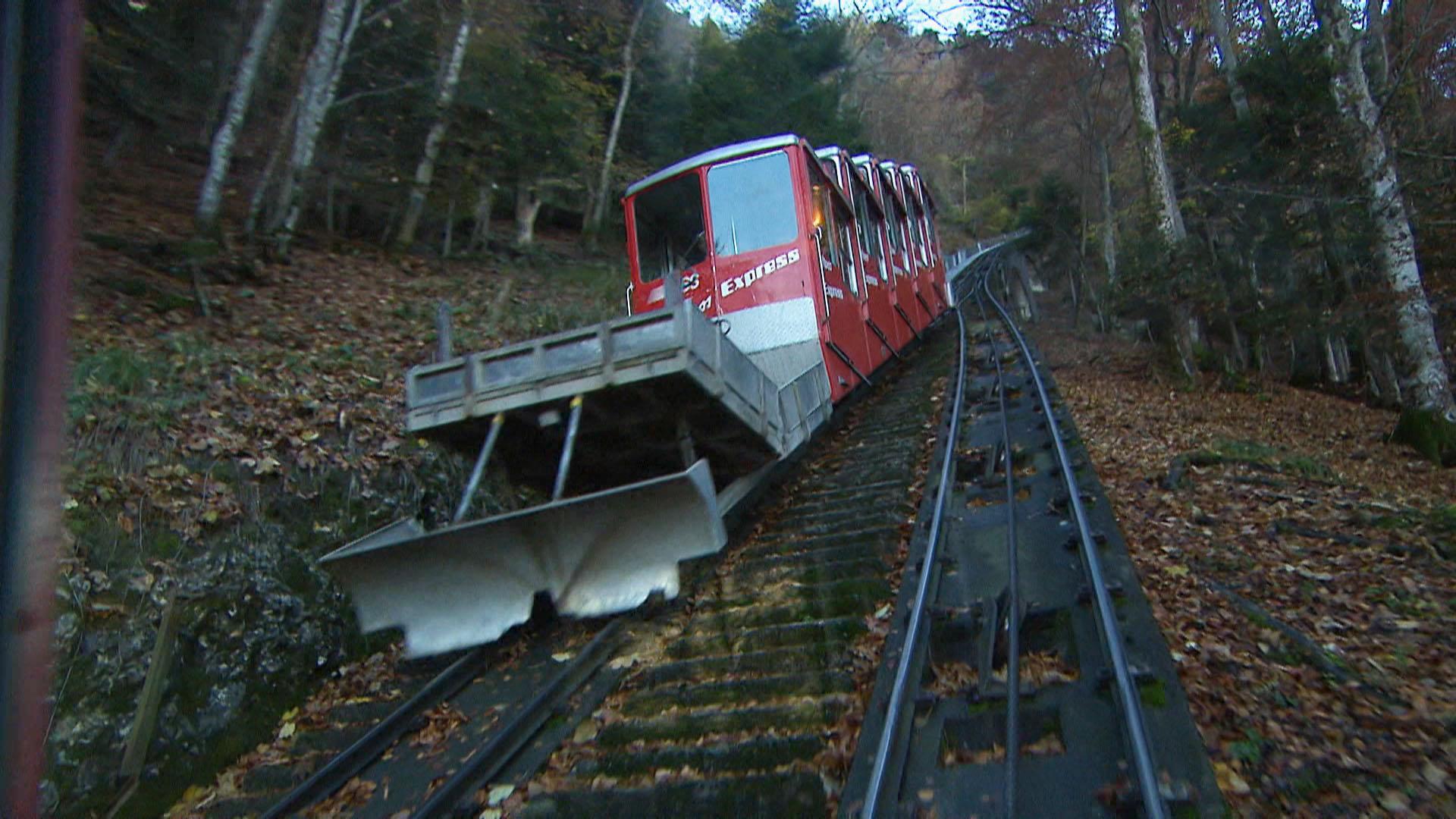
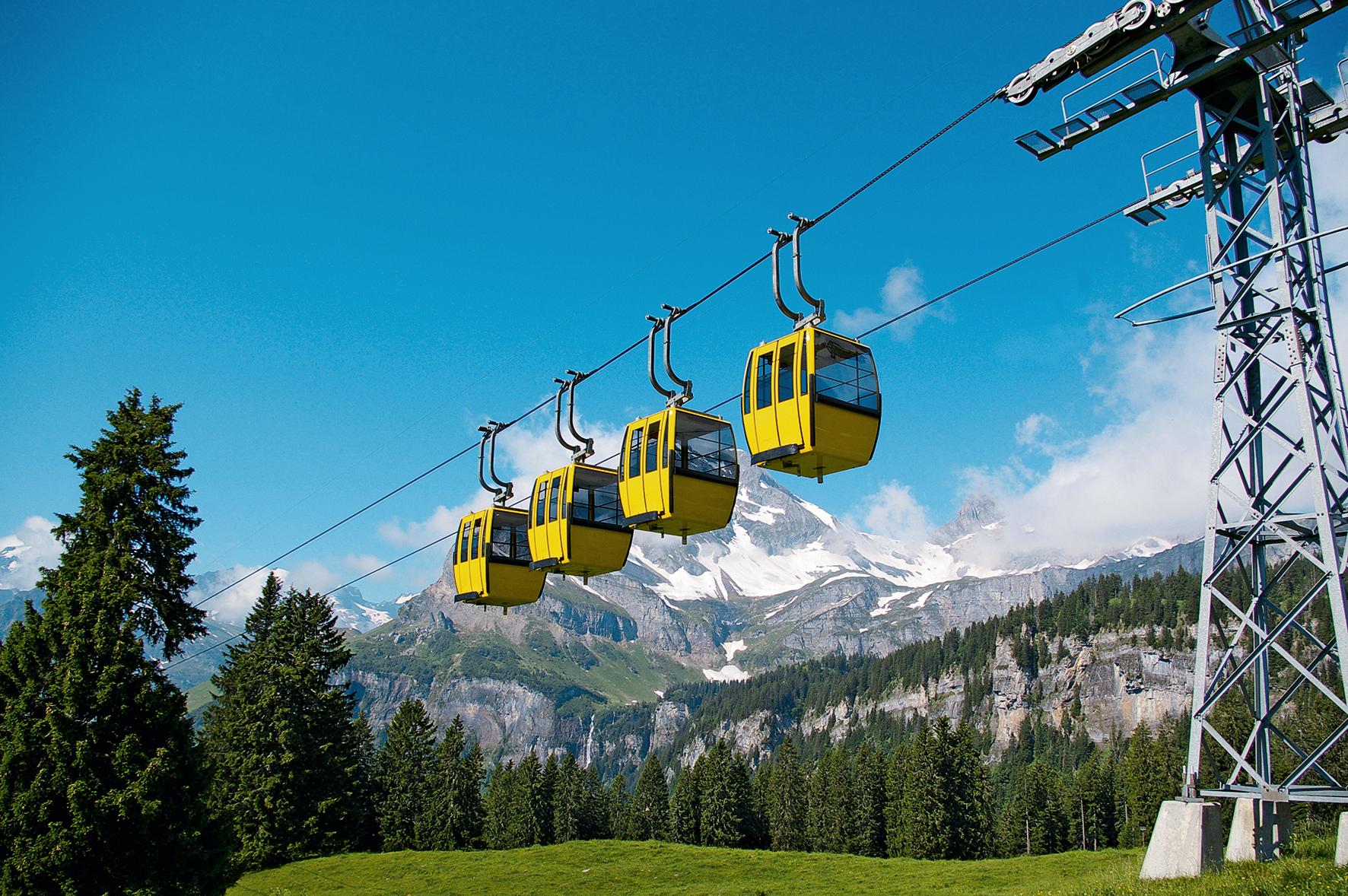
You can find an overview of ongoing debates with our journalists here. Please join us!
If you want to start a conversation about a topic raised in this article or want to report factual errors, email us at english@swissinfo.ch.